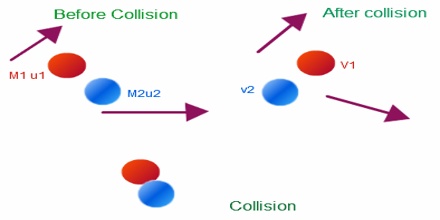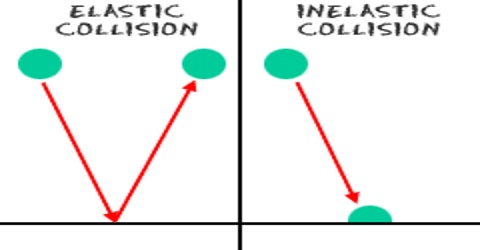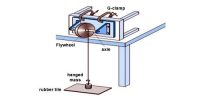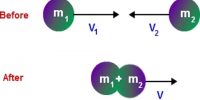Elastic Collision
When collision occurs between atoms or molecules and electrons, protons, neutrons etc. then total kinetic energy remains constant. This type of collision may be considered as total elastic collision. So, an elastic collision is a collision in which there is no net loss in kinetic energy in the system as a result of the collision. This type of collision is an ideal event. In reality such collision is not seen. So we can say that if relative velocity of two bodies before and after collision remains unchanged then that collision is called total elastic collision. The total kinetic energy before collision remains same after the collision. Both momentum and kinetic energy are conserved quantities in elastic collisions.

Example: Collision between two balls of glass or steel is almost an elastic collision. When we throw a ball on the floor, it bounces back. This is an example of elastic collision where both momentum and kinetic energy are conserved.
Again, if after the collision the two bodies instead of being attached to each other get separated from each other, then that collision is called partially elastic collision. Total kinetic energy is not conserved in this type of collision also. During collision some of the energy is changed into energy, mostly as heat energy, in reality, this type of collision occurs.














